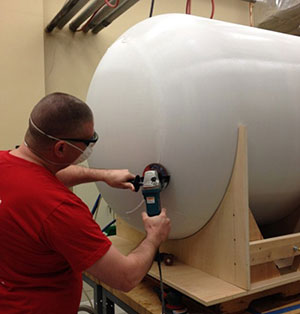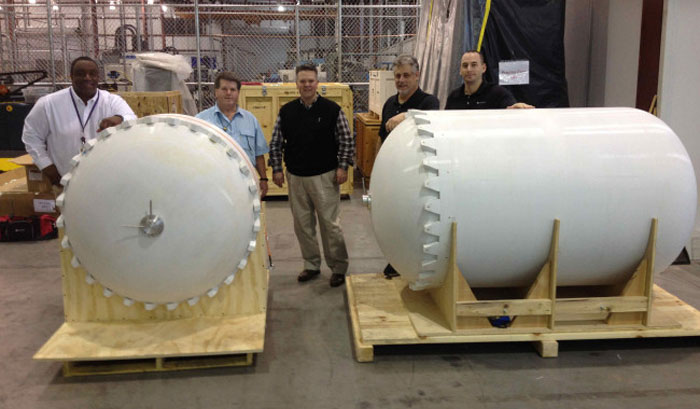Stratasys’ 3D printing service bureau, RedEye, has proven the feasibility of creating large industrial parts with 3D printing technology by manufacturing one of the world’s largest 3D printed parts for Lockheed Martin’s Space Systems Company. The 15 foot long fuel tank prototype was one of two made for a satellite form, fit, and function validation test for Lockheed, helping them get their product to market at almost half the time and cost as with traditional manufacturing.
Using RedEye’s Fused Deposition Modeling (FDM) process on a Fortus 900mcs, the larger of the two tanks was assembled from 10 different pieces, while the smaller was made from 6 pieces, using polycarbonate (PC). Altogether, the printing process took almost two weeks, averaging about 150 hours per section. Due to the size of the parts being made, custom fixtures were used to support the individual segments as they were bonded together. Once fabricated, the parts were machined to meet the company’s specifications, with the final assembly of the tanks totalling 240 hours. You can watch a short clip of the machining process below:
RedEye’s strategic account manager for aerospace and defense, Joel Smith, describes the milestones reached by the project, “This project is unique in two ways – it marks the first aerospace fuel tank simulation produced through additive manufacturing and is one of the largest 3D printed parts ever built. Our ability to accommodate such a large configuration and adapt to design challenges on the fly, demonstrates that there really is no limit to the problem-solving potential when you manufacture with 3D printing.”

The tanks successfully passed a number of quality assurance and accuracy measurements and underwent Lockheed’s form, fit and function testing. The next phase of the project will see the company print its second iteration of tanks, ultimately aiding in the optimized design of their satellites. More importantly, the prototypes, RedEye’s largest parts to date, show off the ability of 3D printing to be used for big objects, despite the limitations of a 3D printer’s build volume.
Source: RedEye




